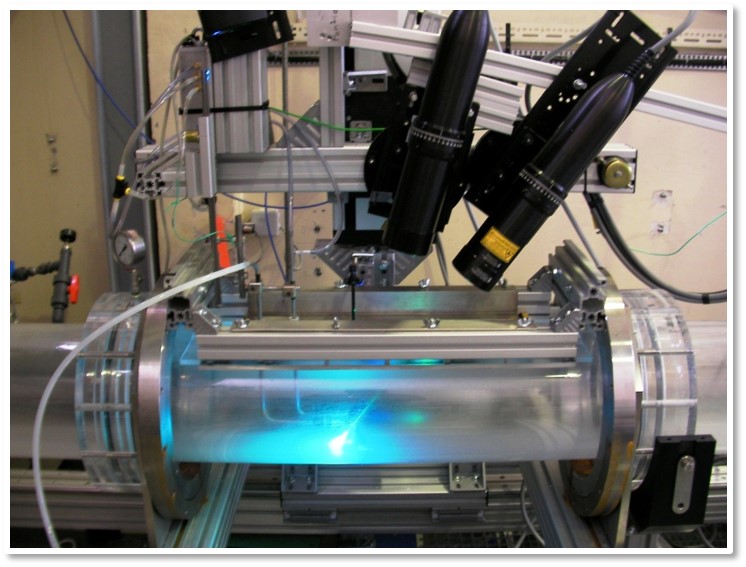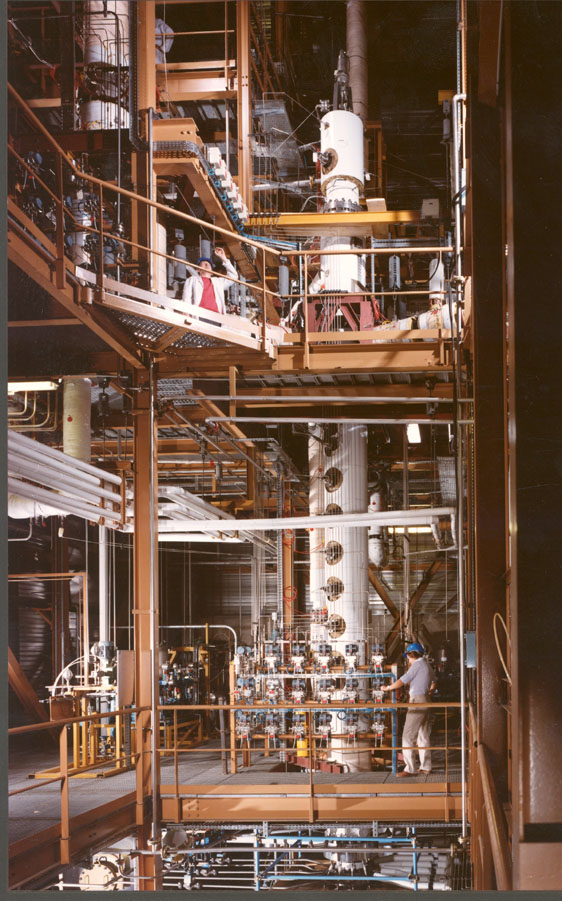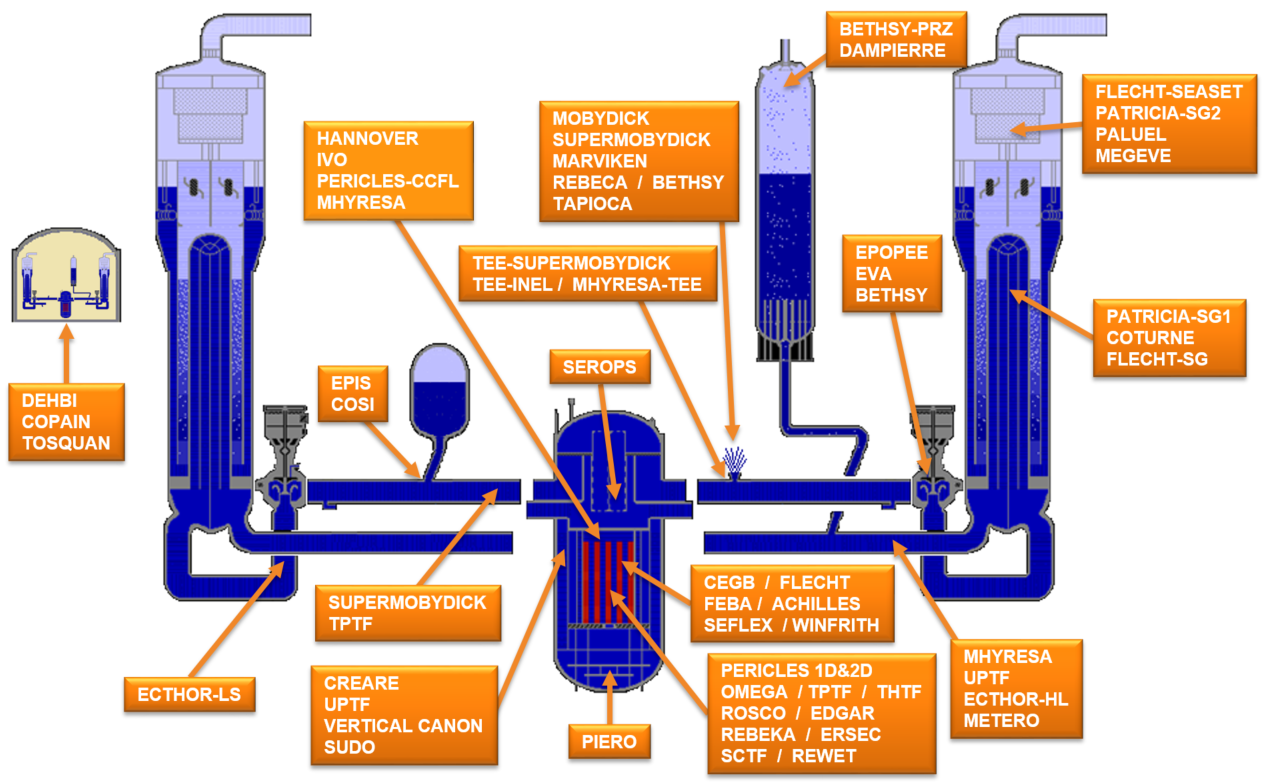Verfication, Validation & Qualification Strategy
The experimental validation of the code consists in calculating two kinds of tests: the called Separate Effect Tests (SET) and the called Integral Effects Tests (IET).
The SET are quite simple analytical tests mainly dealing with one basic phenomenon or one reactor component. They are used for developing correlations and while the first step of the assessment program, called "qualification". The purpose of these tests is to validate each correlation, to obtain their validity domain and also to estimate the uncertainty. It can also be used to get an overview of the node size and time step required for converged computations corresponding to physical situation. Below, the experimental facility REGARD set up at Grenoble has provided experimental data for droplet deposit and turbulent dispersion in horizontal pipe.

In a second step of the assessment program, called "verification", the IET are computed to verify the overall code performance and the consistency of physical laws already separately assessed, to demonstrate the code ability to calculate a variety of scenarios in systems, to reveal phenomena not covered by the experimental analytical program, to determine if the model uncertainties put to light by the qualification are acceptable or not and to give guidelines for the users for R&D or safety studies. Below, the experimental facility BETHSY, set up at Grenoble, is a reduced scale model (1/100 in volume, at the real size in height) of a whole 900MWe PWR. It is considered as the most important experimental facility for the code CATHARE and has provided data until his closure in 1998.

The assessment matrices, initially focused on Large Break Loss Of Coolant Accident (LBLOCA), were progressively extended according to:
- Small and Intermediate breaks,
- Secondary side transients (Steam Generator Tube Rupture, Steam Line Breaks),
- Natural/Forced circulation transitions,
- Special transients (Total loss of Feedwater, total station blackout, Loss Of Residual Heat Removal System).

Uncertainty Analysis
Best-estimate codes such as CATHARE provide a good insight into the complex thermal-hydraulic behavior of reactors during accidents and give a more realistic view of flow phenomena than previous models based on conservative approaches. However, the uncertainty of predictions should be estimated for complete studies like nuclear safety studies. Methodologies have already been developed by IRSN, EDF and FRAMATOME. Whatever the methodology, tools or methods are required for the identification of sensitive parameters, for the quantification of their sensitivity and for the determination of the uncertainties of the code correlations (basic uncertainties).
The statistical method CIRCE has been developed which makes possible to calculate the uncertainties of the constitutive relationships based on qualification calculation results. CIRCE quantifies them in the form of a covariance matrix of the parameters associated to the correlations.
Reducing the User Effect
The so-called user effect is well known for such system codes. Several measures are taken in order to reduce this undesirable effect:
- portability of the code: portability tests are performed at each delivery of a new version to ensure that the code predictions are unique for all computer distributions;
- well referenced Versions and Revisions;
- revisions of the closure laws are fully assessed on an extensive validation matrix. Each assessment computation produces an assessment report. After implementation of new modules or submodules or updates in the code, systematic control tests and non regression tests are performed;
- maintenance team with information about error corrections;
- documentation and User Guidelines: an extensive documentation is produced for describing the modules and submodules, in particular use them in the input deck, and also for explaining how to model system components or specific situations;
- a unique set of constitutive laws: no choice between several correlations is proposed to the users except specific correlations developed for specific components as indicated in the User Guidelines;
- participation to so-called International Standard Problems (ISP).